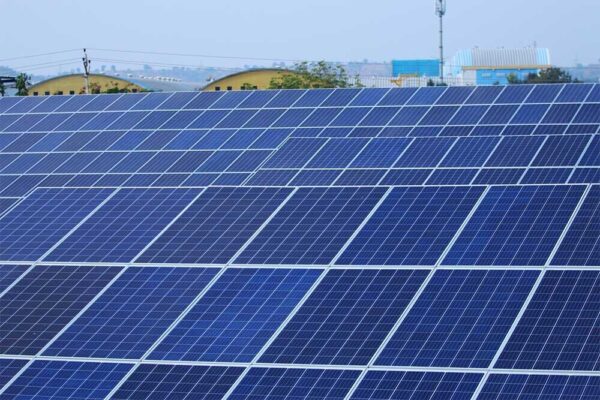A massive growth in consumption of solar power accelerated can be witnessed globally as more nations acknowledge the adverse impact of fossil combustion. Intense competition within the solar industry has led to sharp reductions in installation costs.
Big corporations are also gearing up for solar and investing in renewable solar systems. In the greatest ever solar acquisition deal, Google bought 1,600 Megawatts in 2019. Following in the footsteps, businesses such as Walmart, Verizon, Microsoft and Apple are switching the energy source in their stores, facilities, campus and offices to solar. It is a great step forward to ensure a carbon-free sustainable future while mitigating the surging operating costs and savings on energy expenses.
Although, In the past few years, the erratic weather conditions have been noteworthy, from the scorching heat and catastrophic wildfires to torrential rains and cyclones across the world. These extreme scenarios have left solar investors scratching their heads and completely bewildered, evaluating the cost-benefit ratio of buying a solar system.
With that, there’s a great deal of misleading information disseminating across the world about solar panels and the solar industry. It can be infuriating for EPC players to watch solar investors perpetuate the myths about weather effects on commercial solar installations. Some of these myths are false, others are partially true, and the remaining ones can be explained by an average understanding of the situation. We decided that it is long overdue and we should initiate addressing most of these misconceptions.
Through this blog, we would like to encourage you to investigate all of the facts before you invest money, resources and your time to a particular solar project.
Myth 1: Panels stops working in winter and installation time
In cold and bright (reflective) weather circumstances, solar panels can work as usual as they do in summers. Moreover, they generate additional power as reflectance enhances the sunlight falling on the panel. When solar panels heat up, they tend to generate less power for the same wavelength of light.

It is completely irrelevant advice that if you’re going to install commercial solar panels, “it has to be winter”. Commercial solar installations are more than just weather stations; they are complex, expensive, and highly tuned systems. There is no such thing as “one-day weather stations”, and any suggestions that try to suggest otherwise are purely misleading.
Myth 2: Solar are not effective in cloudy or rainy weather
No matter if there is an overcast, solar panels can still generate clean energy. Clouds cannot efficiently block the sun altogether – if they do, we will be engulfed in darkness every moment the sun is cloaked. The level to which sunlight is obscured also depends on the nature of clouds that surround the sky.
During overcast weather, the solar panels still create power, but perhaps they are not as effective as a sunny day. The reason behind that is clouds filter out the sunlight falling on your panels. High, thin, wispy clouds cannot obstruct the heat, however, lower dense clouds can build a stronger layer.

In rainy weather, photovoltaic systems produce fewer energy units, but just don’t stop functioning entirely. This aspect must be regarded in the off-grid system and further back-up may indeed be offered. As in on-grid designs, the grid can compensate the low output with the local power utility.
Myth 3: It’s only an issue if the temperature goes over 50 degrees
In reality, very few solar panel installations actually experience temperatures that high, and most panels will only ever go up as high as ten or eleven degrees. Anything higher than that may lead to problems with the heat conduction within the photovoltaic modules. This is because the intense heat can cause some materials to melt, creating a hole in the panel.

One of the most common types of weather effects on solar panels is solar flares. Similar to nuclear testing, flare events can send radiation in all directions, which can impact your solar energy system in many ways. In fact, during a solar flare, your solar panels could go out of alignment for weeks or months as a result of intense heat caused by the flare.
Myth 4: Solar panels cannot work in snowy climate
Solar panels perform with only one key element i.e sunshine! Solar can even function for prolonged periods, harsh winter locations such as Alaska, Leh, or Canada. As long as the sun intensity hits the panel for a few hours, it will yield output. The new-age high-efficiency solar panels by Novergy can thrive in tyrannical weather conditions.

Light snow cannot impact the process and can be easily lifted from them. While thicker snow could influence the power production, although when modules are completely covered, it is still capable to carry out the conversion process. Additionally, snow even has the advantage of serving as an agent to clean the panels as they melt!
Myth 5: High winds cannot affect the solar installation
In fact, one of the worst types of weather effects on solar panels is the high winds that are common during certain times of the year. These winds can often damage the wiring on your solar array, as well as the panels themselves. If your installation is near a coastal area, you are especially at risk, as high winds can often create large waves, which can actually break some of your solar cells on contact.

Fortunately, many of these types of weather events are not too common, so if your area does experience high winds regularly, you should just keep an eye out for them and address the issue accordingly. However, if you do have extreme winds in your location on a regular basis, you should still contact a professional installation specialist to look at your setup to see what can be done to prevent damage.
Way forward with Novergy
When installing solar panels, a number of different types of weather effects on solar installation can potentially affect your installation. If you do not have your panels installed correctly, for instance, heavy rain can damage or even completely ruin your solar installation. Likewise, strong winds can knock over your solar panels or even cause them to become unstable.</p<

Strong sunny days can also often cause your solar energy system to experience higher levels of efficiency. Regardless of how much you know about solar energy and how well your solar energy system is performing, these types of weather effects on solar installation should never be overlooked. If you wait, the damage can become irreversible and in some cases may even require that you need to replace or repair your entire solar energy system.
It is important that you address the issue quickly with a professional EPC provider like Novergy. Our panels are designed to withstand drastic variations in temperature in both hot and cold climates. Our top-tier solar solutions have a proven track record of durability, reliability and degrading at a slower rate than the other counterparts. To know more about our solar solutions and panels, visit www.novergysolar.com now!

